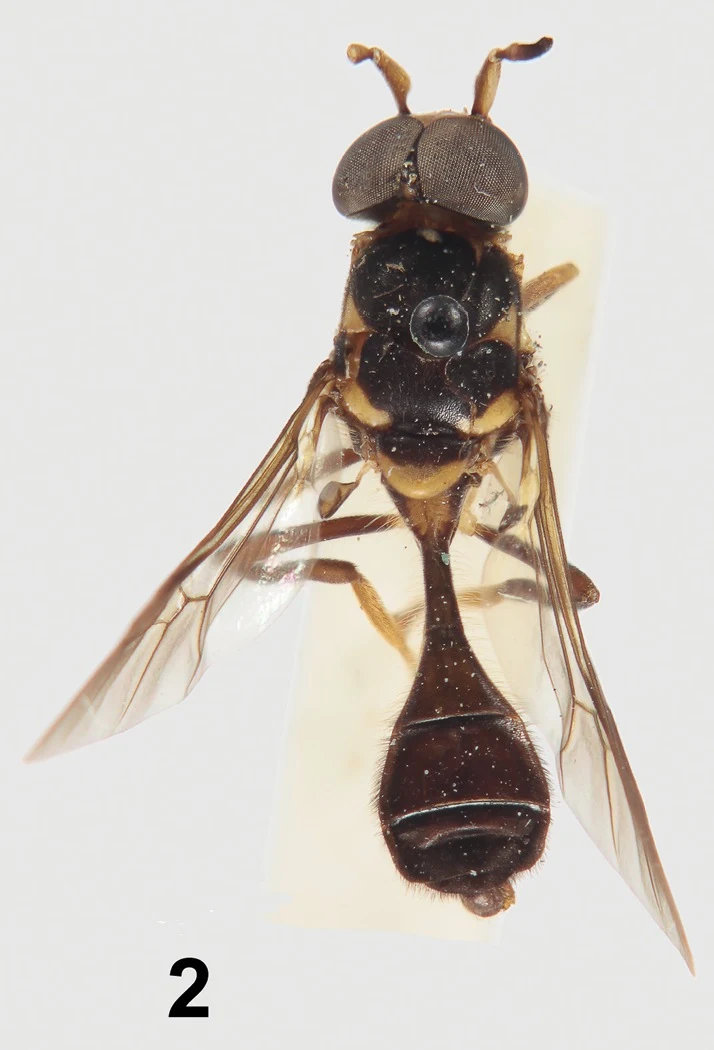- Published on
Which Animal Has the Longest Scientific Name?
- Authors

- Name
- Hamid Siddiqui
- @hamidInventions
We all know animals by their common names – lion, eagle, butterfly. But dive into the world of science, and you'll find every recognized species has a unique, formal scientific name. Ever wondered which creature holds the title for the longest scientific name? Prepare to be amazed (and perhaps tongue tied)!
The record for the longest accepted binomial name for an animal species belongs to a type of soldier fly: Parastratiosphecomyia stratiosphecomyioides.
This impressive name clocks in at a total of 42 letters (including the space between the genus and species). Let's explore this fascinating creature and the world of scientific naming.
What Are Scientific Names Anyway?
Before revealing more about our record holder, let's quickly understand scientific names.
- Binomial Nomenclature: Introduced by Carl Linnaeus in the 18th century, this system gives each species a two part name:
- Genus name: Capitalized (e.g., Parastratiosphecomyia).
- Species name: Lowercase (e.g., stratiosphecomyioides).
- Standardization: These names, usually derived from Latin or Greek, provide a universal standard, avoiding confusion caused by common names that vary by region and language.
- Italicized: Scientific names are typically written in italics.
The Champion: Parastratiosphecomyia stratiosphecomyioides
So, what exactly is this creature with the incredibly long name?
- Animal Type: It's a species of soldier fly (Family Stratiomyidae). These are relatively common flies, often found near aquatic environments.
- Location: This particular species, P. stratiosphecomyioides, is found in Southeast Asia, specifically Malaysia.
- The Name Itself: The name is quite a mouthful! It's derived from Greek and essentially means "Near Soldier Wasp-Fly" (Genus: Parastratiosphecomyia) and "Wasp-Fly like Soldier" (Species: stratiosphecomyioides). The name reflects its appearance and perceived similarity to other related groups ('Stratiomys', 'Sphecomyia').
Counting the characters: Parastratiosphecomyia (21 letters) + (1 space) + stratiosphecomyioides (20 letters) = 42 characters total.

Why Such a Long Scientific Name?
Scientific names become long primarily due to the descriptive nature of taxonomy. Taxonomists often combine roots from Greek or Latin to describe features, habitats, resemblances to other organisms, or to honor people or places.
In the case of P. stratiosphecomyioides, the name likely arose from efforts to precisely place it taxonomically by referencing similarities to multiple related genera or groups, resulting in a complex, compound structure. It wasn't intended to be the longest, but rather to be descriptive within the classification system.
Are There Other Contenders?
Sometimes, other names pop up in discussions about the "longest scientific name." One notable example is:
- Gammaracanthuskytodermogammarus loricatobaicalensis: This is the name given by B. Dybowski to a species of amphipod (a type of crustacean) from Lake Baikal. At 52 letters (or potentially more depending on hyphenation interpretation), it's technically longer. However, its acceptance as a valid binomial name under the standard rules of the International Code of Zoological Nomenclature (ICZN) is often debated or considered unconventional.
Therefore, Parastratiosphecomyia stratiosphecomyioides (42 letters) remains the most widely cited and accepted answer for the animal with the longest standard binomial species name.
Significance of Name Length
While the sheer length of Parastratiosphecomyia stratiosphecomyioides makes for great trivia and is interesting from a character counting perspective, the length itself holds no special scientific weight. The primary goal of scientific naming is clarity, uniqueness, and stability in communication. These extra long names are simply fascinating outliers in the vast catalogue of life.
Conclusion: A Tiny Fly with a Mighty Name
So, the next time someone asks which animal has the longest scientific name, you'll know it's the soldier fly Parastratiosphecomyia stratiosphecomyioides, boasting 42 characters in its official binomial designation. It's a testament to the intricate world of taxonomy and the fascinating details hidden within scientific language – and a fun challenge for any character counter!
Frequently Asked Questions (FAQs)
1. What animal has the longest scientific name?
The soldier fly species Parastratiosphecomyia stratiosphecomyioides holds the record for the longest widely accepted binomial scientific name, with 42 characters.
2. How many letters are in the longest animal scientific name?
Parastratiosphecomyia stratiosphecomyioides has 42 letters (including the space).
3. What is Parastratiosphecomyia stratiosphecomyioides?
It is a species of soldier fly found in Southeast Asia (Malaysia).
4. What does its scientific name mean?
The name is derived from Greek roots describing its resemblance to other types of soldier flies and wasp like flies within its taxonomic group.
5. What is binomial nomenclature?
It's the standard system for naming species, using a two part name consisting of the Genus (capitalized) and species (lowercase), usually in Latin or Greek and written in italics (e.g., Homo sapiens).
6. Why are scientific names sometimes so long?
Length often results from combining descriptive terms (based on appearance, habitat, relation to other species) according to taxonomic classification rules.
7. Is there another animal name sometimes cited as longer?
Yes, Gammaracanthuskytodermogammarus loricatobaicalensis (an amphipod) is longer (52+ letters), but its status as a valid, standard binomial name under ICZN rules is often questioned.
8. Where does this soldier fly live?
It is primarily found in Malaysia, Southeast Asia.
9. Who assigns scientific names?
Taxonomists assign scientific names based on strict rules outlined in the International Code of Zoological Nomenclature (ICZN) for animals.
10. Does the length of a scientific name have biological significance?
No, the length itself is usually an artifact of description or classification and doesn't correlate with the animal's size, importance, or complexity. The main goal is unique identification.